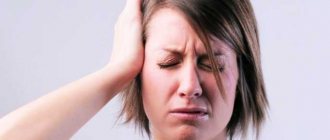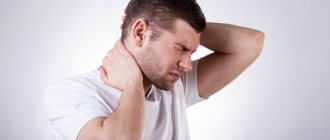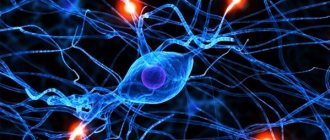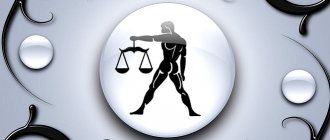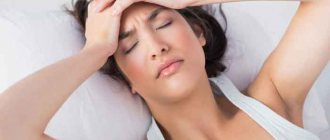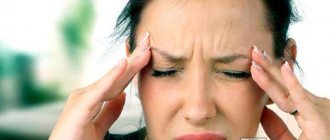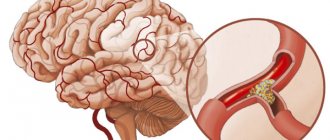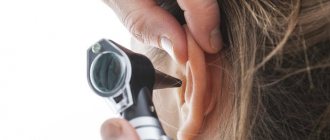Many people know first-hand what headaches are, and have long learned to cope with such a problem. Some take medications, others prefer to rest and relax, and still others use folk recipes and unconventional therapeutic techniques. However, it also happens that the scalp hurts. The discomfort may be accompanied by throbbing and itching, causing nervousness and irritability in the person.
Symptoms
Pain on the scalp has the following parameters:
- monotony – aching and nagging pain;
- pain of moderate severity;
- subjective sensation of squeezing;
- patients often complain that during a painful period, it is as if a helmet or a compressive hoop is being put on their head;
- pain increases when touched;
- in the area of the crown, temples and neck, the pain is felt more strongly due to the thinness of the skin in these places.
The pain has dynamics: the discomfort increases and reaches its peak 45-60 minutes after the onset. The pain also gradually weakens: from the peak, the unpleasant sensations fade away. During a painful attack, hair loss may be greater than usual.
Causes of the problem
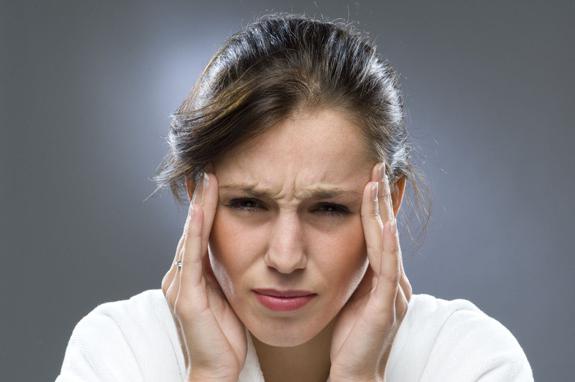
Among the reasons for the sensation as if there is a shooting in the head, the following are most often cited. Damage to peripheral sensory endings. The most common problems are with the trigeminal and glossopharyngeal nerves. This group of causes also includes toxic alcoholic polyneuropathy, tunnel syndromes of 5 and 9 pairs of cranial nerve endings. Problems with the autonomic ganglia. These causes are caused by neuralgia of the pterygopalatine ganglion or the intermediate nerve. Otolaryngology. Problems with the organs of smell and hearing cause sensations of something shooting in the head. The cause of such pain is purulent otitis, which affects the pyramid of the temporal bone, purulent mastoiditis, and sinusitis in the acute phase. Ophthalmology. Pain occurs during purulent inflammatory processes in the eye sockets, which damage the nerve endings. Problems with the osteoarticular apparatus. Shooting sensations appear with arthritis and osteomyelitis in the temporomandibular regions.
This is not a complete list of reasons causing problems. In more rare cases, lumbago occurs due to osteochondrosis of the spine, tumors, cysts or abscesses in some part of the brain, or artery aneurysm.
Causes
The causes of scalp pain and hair loss are three factors:
This includes improper handling of hair. So, too tight a braid, frequent use of shampoos or excessively hot water can lead to pain. According to trichologists, wooden combs are best suited for hair care. Hygiene and the use of cosmetics should be observed.
Hypothermia and subsequent spasm of arteries and veins. The reason is walking without a hat in the cold. Low temperatures cause blood vessels to contract and blood flow to tissues and hair deteriorates. Staying in the cold is the reason why hair falls out.
Diseases. Among the infectious diseases is influenza. One of the symptoms of the disease is hyperesthesia - increased sensitivity of the skin. Pain occurs even from light touches. This symptom is most noticeable when you touch your hair. Unpleasant sensations also appear with seborrheic dermatitis, which disrupts the functioning of the sebaceous glands.
Individual characteristics of the body: meteosensitivity. The physiological state of such people is often determined by weather conditions: wind force, atmospheric pressure, magnetic storms, air temperature and moisture. With a sharp change in one of these indicators, the nervous system reacts with pain, in particular pain in the scalp.
Vegetovascular dystonia. This disease is accompanied by a violation of the autonomic regulation of the body: disruptions in blood pressure and body temperature. People with this disease may sweat when their body does not physically require cooling. Vegetative-vascular dystonia upsets the tone of the arterioles that nourish the hair follicles, which is why pain occurs.
Traumatic brain injury. Pathology occurs due to damage to the substance of the brain and bone structures of the skull. It manifests itself as a headache, including on the scalp and the back of the head, disorientation, impaired consciousness, nausea and vomiting.
Cerebroasthenia is a disease of organic nature, characterized by a feeling of physical weakness, cephalalgia, dizziness, memory impairment and rapid exhaustion of intellectual functions: impaired attention, slowed thinking. The disease develops after suffering a traumatic brain injury or against the background of lipid metabolism disorders.
Factors contributing to scalp pain
It is worth considering that in most situations, a headache occurs when touched due to the development of pathological processes. Therefore, you cannot leave painful symptoms without proper attention and wait for them to go away on their own. Let's take a closer look at why pain is most often felt when touching the scalp. The reasons may be as follows.
Skin diseases
Pathologies of the skin of the scalp are not only painful and untidy in appearance, but also indicate interruptions in the functioning of internal organs. We list the most common diseases:
- Hyperkeratosis. With the disease, the stratum corneum of the epidermis is noticeably thickened. This leads to the fact that there is no removal of naturally dying particles of the scalp. Their accumulation leads to thickening of the outer layer of skin. Lumpiness, pustules, and hair loss appear. The presence of pathology indicates problems with the liver, thyroid gland, hematopoietic system, and gastrointestinal tract organs.
- Seborrheic dermatitis. A chronic disease in which red spots form in the scalp of the skin and can merge with each other. When the disease is neglected, the lesions spread to the face, back, and shoulder girdle. In places where the spots are localized, hair is actively falling out.
- Furunculosis. The occurrence of infectious processes in the body can lead to the appearance of compactions and rashes on the scalp. The skin on the affected areas can be very painful, especially when touched.
Vascular pathologies
Most diseases of the cardiovascular system are associated with disturbances in vascular tone. In this case, the vessels first expand, and then noticeably narrow. Such processes inevitably lead to jumps in blood pressure readings. The patient experiences the following symptoms:
- the skin under the hair on the top of the head hurts, especially when touched;
- severe fatigue appears;
- sweating increases;
- dizziness;
- nausea, vomiting.
To avoid headaches when you touch your hair, you need to keep your blood pressure levels under control. This can be done using a tonometer.

Innervation of nerve endings
Very sensitive nerves are located just under the skin. Damage to them can cause severe pain on the surface of the head under the hair, which intensifies when touched. For example:
- Trigeminal neuralgia. The processes of the neuron extend onto the face, so when it is irritated by touch, the facial and nearby areas of the skin hurt. A characteristic feature of the pathology is unilateral pain. The victims complain that the head hurts on the right or left side.
- Inflammation of the occipital nerves. When you touch the skin on the back of the head, a sharp shooting pain occurs in the neck and head under the hair.
Psycho-emotional overload
Increased mental stress, stress, as well as monotonous painstaking work that requires perseverance can cause tension-type headache. Each individual has a tension headache that manifests itself in a special way. Some people feel a moderate dull ache, while others may experience pain in the skin under the hair when touched. In this case, pathological symptoms increase in the afternoon, when accumulated fatigue takes its toll.
How to treat
There are two ways to treat scalp pain:
The best and fastest way is to take an analgesic tablet. This can be any pharmaceutical pain reliever. Non-steroidal anti-inflammatory drugs relieve pain: analgin, indomethacin, ibuprofen, paracetamol and spasmalgon. NSAIDs should not be taken for longer than 7-10 days. Before your appointment, it is better to consult a therapist.
Coarse table salt relieves pain on the hair roots. It should be rubbed into the skin immediately after washing your hair. You need to wash it off after 15-20 minutes. In case of a one-time attack of cephalalgia on the scalp, you should not rub salt.
Mint. Add a few leaves of the plant to black (preferably green) tea. It is recommended to drink 2 cups at a time.
Lemon. The skin of the citrus plant is peeled to a white layer and applied to the painful areas. Keep the lemon peel on until the pain goes away. For a better effect, you can tie a warm woolen cloth around your head.
Prevention
The underlying disease needs to be prevented, but when the cause has not been established, the following recommendations should be followed:
- Hair care. Make sure that cosmetics are of proper quality. Avoid tight hats and do not use tight hair ties. In cool weather, wear a hat.
- Massage your head once a week. This can be done by a professional massage therapist or a relative, the main thing is to massage the scalp to improve blood circulation.
- Diet, sleep and rest. Take warm baths, include vitamin complexes in your diet (preferably B vitamins).
- Reduce or eliminate alcohol and cigarettes
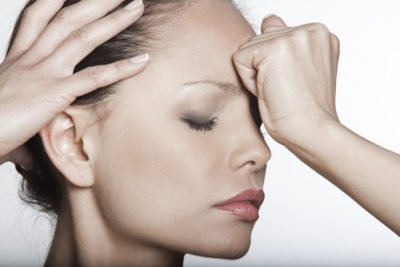
A little prevention so that the top of your head doesn’t hurt
To prevent the situation from reoccurring in the future, you should not neglect medical prescriptions. Discomfort when touched, when it shoots on one side, on the top of the head, on the back of the head under the hair, is a signal from the body. This change cannot be ignored, attributing it to fatigue and other factors.
It is necessary to identify the reasons and then draw appropriate conclusions.
Constantly taking painkillers does not give positive results; moreover, the body gradually gets used to the drugs and stops responding to them.
Accordingly, if you do nothing, the reasons do not disappear by themselves, and the pain does not stop.
- use only high-quality care products that are suitable for your hair; avoid tight hairstyles; systematically carry out health procedures for the hair, its roots and the scalp itself; rationalize work and rest time; develop a balanced diet; try to lead a healthy lifestyle.
If you properly care for your hair and all body systems, the risk of many problems and the development of serious diseases is reduced. We must not forget that all organs are interconnected. When work in one part begins to be disrupted, work in other areas automatically changes.
Sources:
http://fb. ru/article/146920/strelyaet-v-golove—chto-delat-prichina-strelyayuschey-boli-v-golove
http://golovahelp. ru/golovnaya-bol/strelyayushhaya. html
http://golovushka. ru/bolezni-kozhi-golovy/bolit-kozha-pod-volosami. html
Reasons why it hurts to touch
- Hairstyles with tight balls. Hairstyles using many pins, bobby pins, hair pulled into a ponytail or bun, tightly braided braids. Changing your hairstyle often solves the problem. You can learn more about other possible causes of scalp tightening in this article.
- Naturally heavy hair. If your hair is naturally heavy, then the hair follicles may become inflamed from wearing a heavy hairstyle, and it will be painful to touch. A haircut will improve the situation.
- Hypothermia. Hypothermia – lack of headwear in cold weather. Going outside with wet hair. Hypothermia leads to inflammation of blood vessels, nerve fibers, hair follicles, and also causes vascular spasms, which again leads to pain when touched.
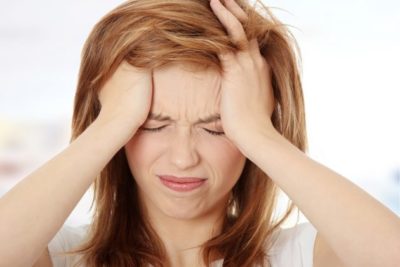
Lack of hygiene. It is important to wash your hair when it gets dirty.- Narrow hats. Hats that tightly cover the head, disrupting blood and lymphatic circulation.
- Cosmetics and preparations. Cosmetics often cause allergic dermatitis and pain as a result. Changing shampoo often solves the problem.
- Inappropriate comb. Combs with hard, sharp teeth damage the skin. Changing the comb eliminates the symptom.
The skin on the head under the hair can also hurt when touched for psychological reasons:
- Stress.
- Psycho-emotional fatigue.
- Depression.
- vegetative-vascular dystonia;
- inflammation of nerve processes, endings;
- allergy;
- dermatitis.
We invite you to watch a video about the reasons why your scalp may hurt:
Diagnostics
If unpleasant sharp sensations occur infrequently, end quickly enough and are periodic in nature, then in most cases people see no reason to see a doctor. However, you should not let the disease take its course or try to self-medicate when you have a shooting in your head. What to do in this case should only be decided by a competent specialist. First of all, you need to visit an ENT specialist (to rule out sinusitis, sinusitis, otitis media and other similar problems) and a neurologist. Only a comprehensive examination will allow us to draw a conclusion about the cause of the pain.
At the same time, you should not refuse diagnostics, because the problem can only be eliminated if the cause of its occurrence is accurately determined. It is also important to know that the doctor cannot make a correct diagnosis if the patient simply tells him that there is a shooting in the head on the right or left. For diagnosis, it is important to know the frequency of these pains, their duration, the factors that provoke their onset, and other features.
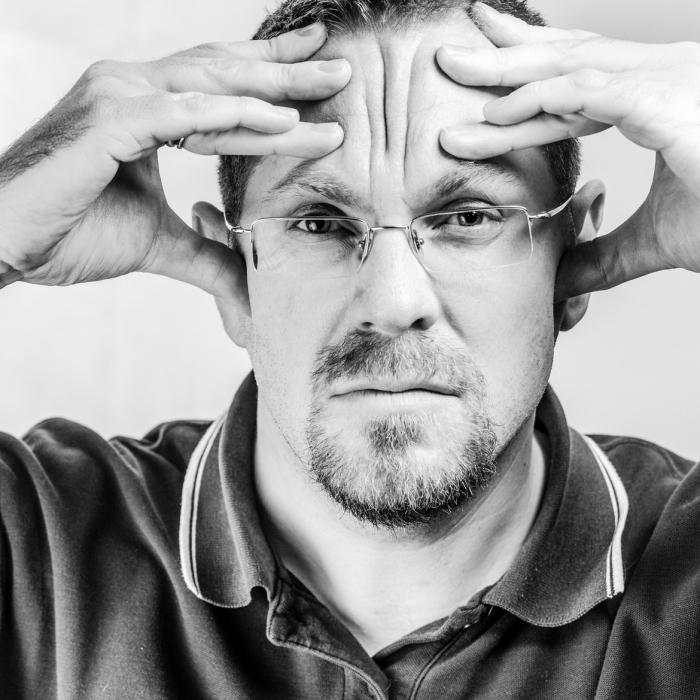
No specialist can prescribe treatment without a preliminary examination. First, you should rule out possible otolaryngological problems and undergo an examination by a neurologist. If there is a shooting in the head due to inflammation of the nerve endings, then the patient will be prescribed thermal, physiotherapeutic or water treatments, massage of pain points, and drug treatment. The last point includes taking non-steroidal anti-inflammatory drugs, vitamins belonging to group B, and blocking pain points with anesthetics.
If a patient complains of shooting in the head, then doctors advise using heat. In a hospital inpatient setting, they can apply paraffin to the problem area, make compresses with dimexide, and apply semi-alcohol lotions. In addition, physiotherapeutic procedures are often prescribed: electrophoresis, laser therapy, UHF, iontophoresis, magnetic influence, galvanic current. The greatest effect from them is observed in cases where one or another nerve has been blown through in a draft. In some situations, with superficial neuralgia, it is recommended to do a light massage of the pain points.
For patients treated at home, it is recommended to use dry heat. This can be an ordinary woolen scarf that is wrapped around the problem area. It is important to ensure that this place does not become too cold in the future.
Localization of painful sensations
The nature of the pain cannot be sudden, acute, unbearable, or occurring all at once. The pain syndrome develops slowly, gradually, gaining strength and intensity. What can cause pain under the hair?
The localization of pain may indicate the cause:
- On the top of the head – with vegetative-vascular dystonia.
- On the back of the head – a consequence of inflammation of the nerves in the back of the head.
- Behind the ears – dental ailments, lymphadenitis, otitis media, mastoiditis.
If there are accompanying symptoms of itching and burning, if they are suspected of a dermatological nature, then prescribe:
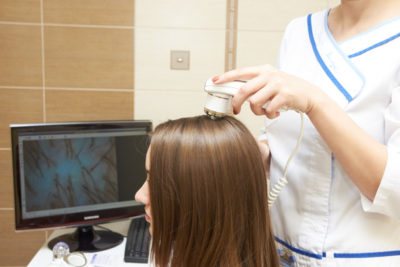
microscopic examination of scalp scraping;- analysis of estrogen and androgen hormones to identify hormonal imbalances;
- thyroid and adrenal hormones.
The trichologist performs trichoscopy, assesses the condition of the blood vessels and the degree of damage to the scalp.
If there is a suspicion of vegetative-vascular dystonia, then the following tests are performed:
- general blood analysis;
- blood sugar test;
- blood chemistry;
- Analysis of urine;
- analysis of thyroid hormones;
- ECG;
- EchoCG;
- Ultrasound of the abdominal organs;
- Ultrasound of the thyroid gland.
Based on the results of the examination, the patient may be prescribed a course of treatment, the composition of which depends on the diagnosis and the extent of the lesion.
First aid at the first manifestations
Often, with chronic fatigue, emotional stress, or spring vitamin deficiency, the scalp reminds itself of itself with painful sensations. What to do in this case? You can resort to home remedies.
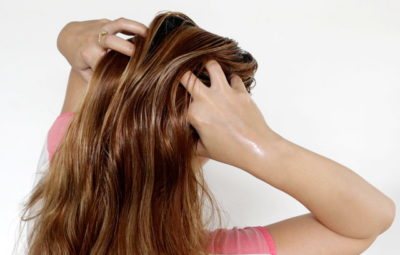
You can perform the massage yourself:
- First, slowly massage the temporal, frontal, and occipital areas.
- Next, make light movements from the forehead to the back of the head, from the crown to the ears, from the crown down to the entire surface of the head.
There are no clear instructions for implementation: simply alternate stroking, pressing, vibration, and rubbing areas of the head. The main rule: start with stroking and end with it.
You can also use a comb:
- First, perform 100 smooth movements from the back of the head to the forehead, and then 100 movements in the opposite direction.
- Then make a parting on the head. 100 movements on the left, 100 movements on the right.
- Make all movements of the comb carefully. The massage lasts 5-10 minutes.
- First they wash their hair.
- Then sea salt is applied to clean skin (table salt is also possible).
- Gently rub it into the hair roots and rinse off after 10 minutes.
- Mustard powder is diluted in warm water to a thick sour cream, then rubbed into the scalp.
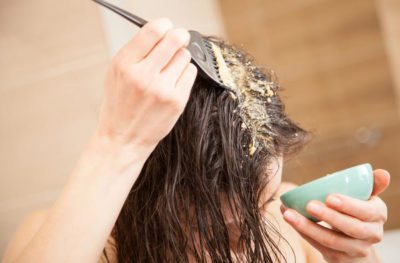
After 30 minutes, the mask should be washed off with warm (not hot!) water.
There is no need to use cosmetics. The mustard mask improves blood circulation in the vessels located in the subcutaneous layer and reduces pain. During the procedure, in case of any discomfort, itching, burning, the mask is washed off immediately, without waiting for the end of the procedure.
You can rub essential oil into your whiskey:
Essential oil should be diluted in a base oil (almond, apricot, grape seed, jojoba, wheat germ oil). Direct application is prohibited to avoid burns. You can combine aromatherapy with therapeutic massage. All these methods can be used if there is no suspicion of any pathology.
Treatment: do you need to see a specialist?
If the pain becomes permanent, you should consult a doctor for treatment. The functions of human internal organs are interconnected as a single system. If something makes itself felt, then there is a problem in the body. First of all, you need to make an appointment with a general practitioner.
After analyzing all the symptoms, the therapist can schedule a consultation with a psychotherapist, neurologist, dermatologist or allergist. Each specialist prescribes his own treatment.
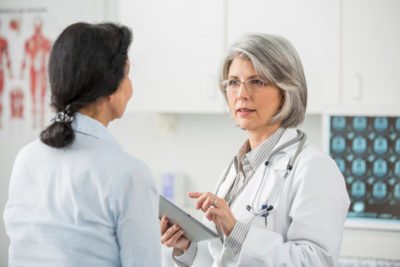
For severe pain, the therapist may prescribe painkillers.- A dermatologist (trichologist) observes the patient if the pain appears against the background of a dermatological disease. Prescribes external medicinal solutions depending on the type of disease.
- An allergist observes a patient in case of a severe allergic reaction to something. Prescribes antihistamines. Determines the range of sensitivity of the body to a specific allergen and corrects it.
- A neurologist treats a patient with the development of vascular pathology and diseases of the nervous system. Writes out:
- drugs affecting blood vessels;
- sedatives;
- neurostimulants;
- diuretics.
Taking care of yourself is the key to a long and happy life. This is how a simple symptom of scalp pain can become decisive in a serious illness. And timely help will save you from labor-intensive, complex treatment in the future. Now you know if your scalp hurts when touched, what it could mean. Be healthy!
If you find an error, please select a piece of text and press Ctrl+Enter.
If your scalp hurts when touched, there may be several reasons - from physiological characteristics to incorrect selection of headwear or lifestyle.
Localization of sensations is noted in one or several areas.
Options for solving such a problem depend on the reason that caused it.
Signs of an incipient illness
Each person's scalp can hurt differently. It depends on the reasons causing this ailment and the individual characteristics of the body. There are even several terms that define this rare phenomenon: cephalalgia, tension headache, “neurasthenic helmet.” But, if the scalp hurts, in most cases the symptoms are similar. It manifests itself:
- pain when touched;
- pain when combing hair;
- tingling or burning sensation;
- constant itching;
- pain in the root of the head.
Both individual areas and the entire head, its crown, can hurt, and the pain can occur unnoticed, gradually becoming more intense, and last for a long time. From time to time, you may feel as if your head is being squeezed by an invisible hoop.
The peculiarity of scalp pain is monotony, a feeling of pressure, pain of moderate or moderate severity.
Why does my scalp hurt when touched?
Basically, there are 3 types of factors that provoke pain and ailments.
These include:
- Psychological or emotional;
- Cosmetological or household;
- Physiological.
Experts agree that an unstable emotional background is considered the main cause of unpleasant sensations.
To accurately determine the type of factor that caused the illness, you need to understand what applies to each of them.
If the personality is characterized by impulsiveness and instability, then there are much more complaints about pain in the head. This is associated with frequent stress, anxiety, sudden mood swings and prolonged mental tension.
Due to stress, a person notices increased hair loss. It is accompanied by soreness of the scalp when touched, which is localized either in a specific area or over the entire surface.
If the skin seems to pull when you touch it or when combing it, then this may be due to wearing an uncomfortable/tight headdress or too tight hairstyle. The use of hair care products needs to be given more attention; poor quality or the use of an expired product negatively affects the hair.
Symptoms include:
- Skin rash;
- Itching, irritation;
- Dandruff, flaking;
- Hair loss;
- Dullness and split ends.
Frequently washing your hair and using hot water is bad for the skin.
Any cosmetic products, regardless of price and quality, can cause an allergic reaction, which provokes skin algia.
This category includes the presence of bad habits, proper nutrition, and maintaining a healthy lifestyle. Headache is caused by vitamin deficiency, weak immune system and other reasons.
Individual characteristics and hereditary predisposition affect the likelihood of pain.
Preventive measures
People who have pain in the skin under their hair should follow the advice of doctors, as well as take preventive measures so that symptoms do not reappear.
This condition cannot be ignored, since the reasons can be very serious. For prevention, you can apply the following recommendations:
- Use only high-quality care products.
- Do not wear tight hairstyles or hats.
- Constantly carry out procedures to improve the health of hair, roots, and skin.
- Normalize your workday, adjust your diet, and exercise to improve your overall health.
- Stress and other emotional disorders should be avoided.
- Hair should always be clean, which will protect it from getting infected.
For what reasons does the head and scalp hurt in one place?
If the skin aches when touched in only one part, then the reason may be tight styling, wearing a ponytail or braid for a long time. But it happens that even with short hair, women and men complain of pain in this area.
Why your head and skin may hurt in one place:
- Mechanical damage - wound, abrasion, hematoma;
- Allergic reaction;
- Incorrectly selected headdress;
- Due to prolonged immobility;
- Overheating or hypothermia;
- Sudden changes in blood pressure;
- Insect bite - mosquito, bug, tick.;
- Vasospasm.
If a person has the disease neurasthenia, then the pain is most often in the back of the head, forehead or temples.
Pain in a certain area may indicate the following disorders: in the temples and forehead - hypotension, in the back of the head - hypertension, and if it hurts near the base of the skull - a sign of osteochondrosis.
In the place where the unpleasant feeling is localized, there is an intracranial tumor, which a doctor can diagnose.
Localization of pain
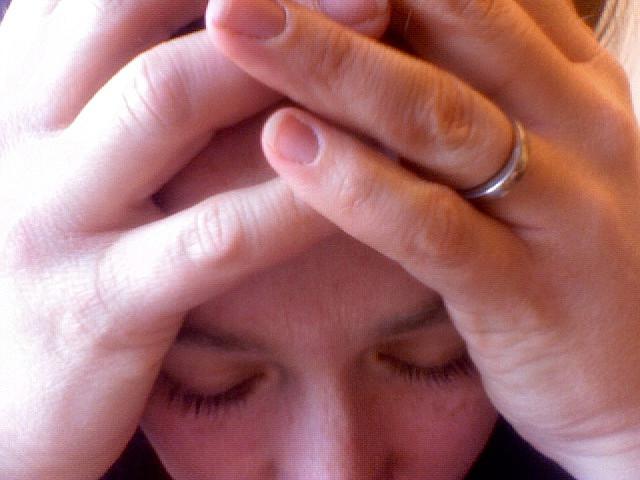
Some patients, when visiting a doctor, cannot even describe where exactly the discomfort occurs. They can only point to the problematic part of the head. It should be noted that in medical practice there are no cases of description of bilateral lumbago. As a rule, shooting pain in the head occurs in certain places.
Frontal lobe. Most often, patients point to the right side of the face above the brow ridge. Temporal pain. It is in this area that a large number of nerve endings and pain receptors are concentrated. Parietal localization. Many nerve trunks branch in the crown area - this is the cause of pain in this area of the head. Occipital region. Shooting in this place occurs in most cases after a sharp turn of the head; in some patients, clear zones can be identified, when touched, sudden pain appears.
What to do if your scalp hurts on one side
If the cause is a tight hairstyle, massaging the skin with a soft brush will help relieve the symptom.
To get rid of unpleasant sensations, you can make a salt hair mask. To do this, salt is applied to the roots, gently rubbed in, and after a couple of minutes, washed off with warm water. The method is used provided there are no wounds, irritations or redness of the scalp.
In cases where the culprit is seborrhea, fungus or other dermatological diseases, antimycotic agents (shampoos, lotions, gels, ointments) are prescribed. If algia is caused by an allergic reaction, you need to use antihistamines orally (in the form of drops, tablets) and topically (in the form of ointments, creams).
No need to self-medicate! All drugs are prescribed by a doctor depending on the factor that provoked the disease.
Methods of dealing with a painful illness
Whatever the reasons, if your scalp regularly hurts when touched, you should contact a specialist who, after an examination and diagnostic measures, will find out the cause and make the correct diagnosis. The method of treatment will depend on this.
The most traditional and effective method is drug therapy . The doctor may prescribe products for external use in the form of ointments, gels, and mash. Depending on the cause, he may supplement treatment with medications in the form of tablets or injections. If during treatment the scalp continues to hurt, it is necessary to stop the attack using any painkiller.
In case of emotional and psychological disorders, you should contact a neurologist who will conduct an additional examination and prescribe long-term complex therapy. A disruption in the functioning of the vascular system requires a serious approach. In this case, an effective method may be to prescribe a course of cleansing therapy and take medications that stabilize the functioning of blood vessels and strengthen their walls.
Professional therapeutic massage . It should be used if the scalp hurts due to external causes or simple overwork. You can perform massage at home yourself by studying any available technique. Massage can be carried out either with your hands or with a massage brush. As a rule, after finishing the massage session, touching the scalp and hair roots becomes less painful.
If the reason lies in the wrong selection of cosmetics , then you should start treatment, and then change hair and skin care products. In this case, the use of simple and accessible traditional medicine recipes will be effective.
Which doctor should I contact?
Often, after physical exertion or mental stress, people feel worse. The nature of the pain can be varied. Compressive, pressing, throbbing pain in one side of the head is possible.
Pain during exercise is often functional in nature. They can occur for many reasons:
- Changes in temperature and atmospheric pressure;
- Stressful state during physical activity;
- Heat and stuffiness in the room;
- Dehydration is often the cause of headaches;
- Eat a large meal before training;
- Overweight people often suffer from hypoxia during exercise.
The likelihood of illness is higher in people with specialties: programmer, accountant, driver, who spend many hours at the computer or constantly strain the muscles of the eyes and neck.
The initial appointment should be made by a therapist. He will conduct a general examination, measure blood pressure, write out directions for tests and refer you to specialists.
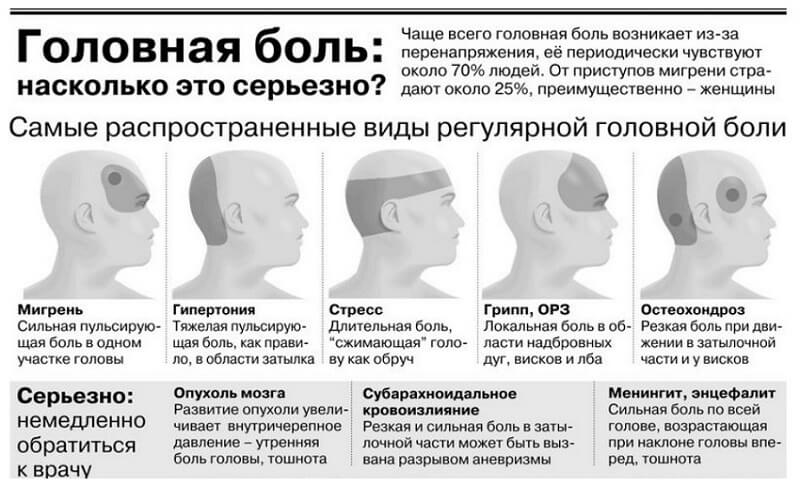
If you have unpleasant sensations in the head and neck area, it is good to have a home blood pressure monitor, with which you can track pressure surges in different life situations. A rise in blood pressure after physical activity can often be the cause of pain.
The doctor gives a referral to an otolaryngologist to rule out chronic otitis media, sinusitis or inflammation of the maxillary sinuses (sinusitis).
The doctor can give a referral to an ophthalmologist to identify changes in the fundus and possible vision defects.
Most of the causes of discomfort in the head are associated with neurological symptoms, so diseases accompanied by head pain syndrome are treated by a neurologist.
Symptoms and locations
Shooting pains in the head come from a neurogenic nature. Pain syndromes are provoked by injuries and inflammations in the head. Also, such manifestations can cause untreated diseases.
Typical signs of cranialgia:
- pain occurs in attacks; lumbago is constant and can last about 10 hours; shooting headaches radiate to the neck, back of the head and shoulder; often feels sick and vomits; sometimes limbs go numb; hearing is impaired; dizziness and unsteady gait; sudden mood changes; painkillers do not provide relief; temperature increase.
In the head, shooting pain always occurs on one side. It is difficult to find the shooting point and patients indicate only the painful area. Painful sensations torment a person with unexpected attacks. Jerking pain appears out of nowhere and for no reason. Shooting cranialgia should not be considered an independent pathology and should only be dealt with the symptoms.
